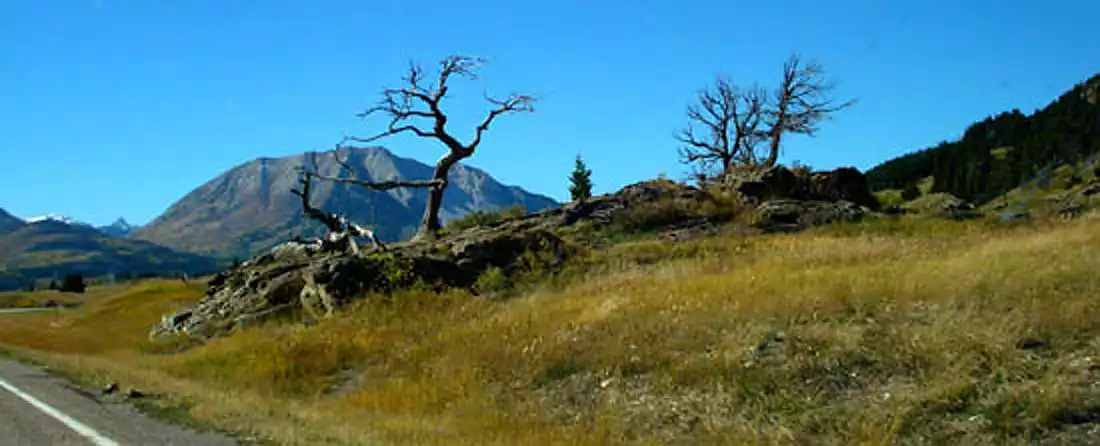This area is named for the pass that lies below a mountain peak that resembles a giant crow’s nest. The pass crosses the Continental Divide and is the southern-most rail and road route from the prairies to the Pacific. The Crowsnest Pass area encompasses a number of communities along the Crowsnest Highway 3 on both sides of the Alberta – BC boundary. The towns in this area began their existence about a century ago as coal mining towns moving from Bellevue to Coleman, Frank, Hillcrest and in BC, Fernie.
Crowsnest Pass History
This region has been settled by the First Nations and their ancestors for over 10,000 years. A 1973 survey of the area identified 250 prehistoric sites. One 8500 year old summer camp was identified on the shores of Crowsnest Lake.
The area was first settled by Europeans in 1880s when a sawmill was built at Mill Creak, about 19 km south of the pass by Senator Peter MacLaren who moved her from Perth, Ontario. The construction and completion of the Crowsnest Pass railway in 1898 ensured its economic success. A new mill was built in Blairmore in 1900 which thrived until 1932. By that time coal deposits were found in the valley, and quickly became the main industry of the Crowsnest Pass. The five main communities in the Pass were all founded at the start of the 1900s to support the coal mines. Bellevue & Hillcrest (to the east of Frank Slide) and Blairmore & Coleman (between Frank and the BC border) have dozens of buildings dating back to this era.

The Frank Slide, which visitors first see on the south site of the highway, but soon realize it has spread to the north side of the road, where the Visitors Centre is placed. One April 29, 1903 over 60 town residents were killed when the south slope of Turtle Mountain released 90 million tones of limestone, burying the town, the railroad, and a mine. Turtle Mountain on the south side is 2,109 metres (6920 ft) tall and all the rocks in the valley come from a slab that was 150 metres (500 ft) deep by 425 me (1,400 ft) wide, which slipped off an unstable mountain in under two minutes.
The Hillcrest Mine Disaster struck on June 18, 1914 killed 189 coal miners (though some reports put the number at 195) and is the worst Canadian mining disaster of all time. A 9 foot monument was unveiled in the town cemetery in 2000, marking the mass grave for all but 6 of the lost miners (those were returned to their families in Nova Scotia to be buried with their families). Other mine disasters in the Pass occurred in 1910 (30 miners killed), and 1926 (10 killed).
During the Prohibition from 1916 to 1924, the area was popular with rum runners. The leader in the area was Blairmore merchant and one-time town councillor Emilio Picareiello, also known as Emperor Pic.
Town information about communities to the east along the #3 Crowsnest Highway includes Pincher Creek, Cardston, Fort MacLeod, Lethbridge, Medicine Hat, and Cypress Hills Inter-Provincial Park.






 Along Highway 3 near Highway 507, on the north side of the highway
Along Highway 3 near Highway 507, on the north side of the highway
